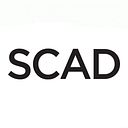Books on Books!
“Books about books are my favorite,” says Teresa Burk (M.A., historic preservation, 2016). As head librarian, SCAD Atlanta, Burk is in her element. The library, located in the university’s main academic building at 1600 Peachtree, offers students an abundant and growing catalog of books, periodicals and visual resources. It’s also home to Atlanta Print Collection and Artists’ Book Collection, two teaching collections that Burk uses to facilitate student learning experiences complementary to classroom curricula. “Part of the instruction I do is referring students to books about artists’ books,” she explains.
Here are a few Burk picks, all of them in SCAD Libraries:
Andrew Roth, Philip E. Aarons, and Claire Lehmann, eds., Artists Who Make Books (Phaidon, 2017): “The SCAD Atlanta library has an incredible collection of artists’ books. Numbering 2,300 volumes, it is one of the largest in the southeast. We have deep holdings in work from the 1960s and 1970s and from Atlanta’s artist-run Nexus Press. We continue to build on the collection, and a point of pride is the student work we collect during the annual student artists’ book competition. This book is a great place to start exploring the history of artists’ books — you’ll find many of the artists mentioned here in our library collection.”
Jeff Brouws, Wendy Burton, and Hermann Zschiegner, eds., Various Small Books (MIT Press, 2013): “This book is a tribute to the artist Ed Ruscha. Ruscha is sometimes called the godfather of artists’ books because of the small, photo-based books he made in the 1960s and ’70s. Those books are highly collectable and we are fortunate to have some of them in the SCAD Libraries. This book shows the impact they had on other artists. It’s also about looking and noticing what is interesting in the often-mundane world around you.”
Martin Parr and Gerry Badger, The Photobook: A History (Phaidon, vol.1 2004, vol.2 2006, vol.3 2014): “This three-volume set about the history of the photobook brings together an incredible range of material. Parr and Badger discuss the photobook as propaganda, the stream-of-consciousness photobook, the artists’ photobook, the company photobook, the protest photobook, and the identity photobook. This set is indispensable inspiration for photography students and all students involved in telling stories with pictures.”
Sina Najafi (foreword), Curiosity and Method: Ten Years of Cabinet Magazine (Cabinet Books, 2012): “This is a book about a magazine in the form of an encyclopedia. In other words, not your average reference book. What I love is the range of topics covered–from animal architecture to synesthesia–things I find myself wanting to know more about. Because Cabinet magazine aims to ‘encourage a new sense of curiosity,’ this book is perfect for artists, designers and creatives. We also have the magazine available in the Atlanta Library.”
Fleur Cowels, ed., The Best of Flair (Rizzoli, 2014): “Recently I was working with a graphic design class researching unusual publication design. We looked at some artists’ books and contemporary, collectible magazines and when we got to Flair….yes! Goldmine. Flair was a short-lived (1950–51), innovative, lavishly produced magazine famous for its die-cut covers and superb coverage of the arts. You know a magazine that only lasted a year is special if a deluxe book about it has a third edition. We have some original issues of Flair in the special collections and several copies of this book in the SCAD Libraries.”
Jane Jacobs, The Death and Life of Great American Cities (Random House, 2011): “This is the 50th anniversary edition of an influential and poetic book about the city, originally published in 1961. Jane Jacobs approaches cities from a humanistic perspective and writes about the ballet of street-life. I was introduced to Jacob’s writing and activism during my graduate work in preservation studies here at SCAD. Her perspective helped me look at my surroundings with fresh eyes, not unlike Ed Ruscha’s photobooks. I love books that prompt you to take another look, and consider another angle.”
By Peter Relic
